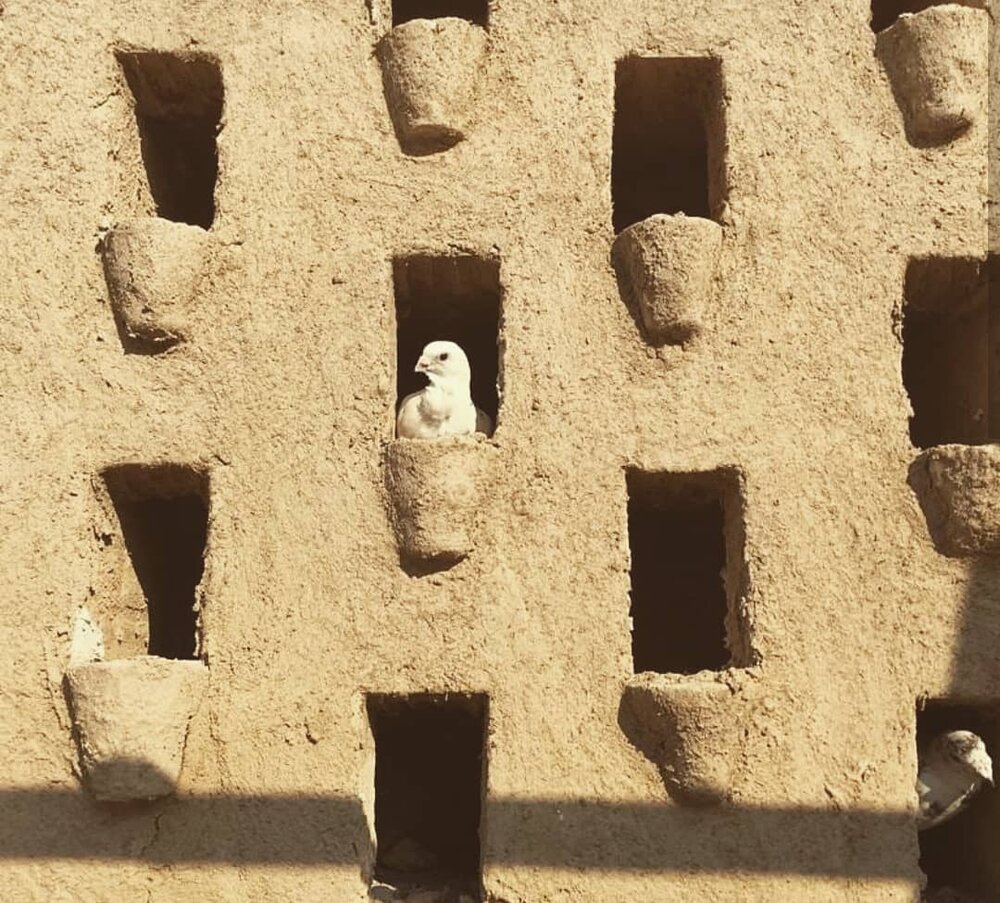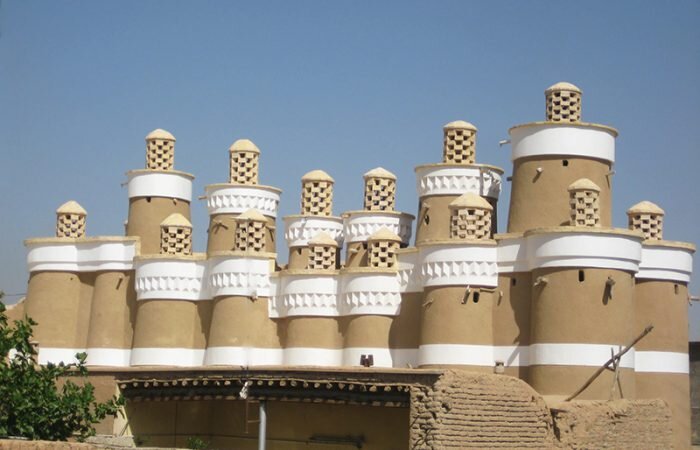Pigeons are many times deemed as mere nuisances especially by city dwellers. However, they were quite valuable in ancient Iran, mostly for their droppings!
There are still many ruined or well-preserved “luxury” accommodation buildings across the ancient land, which are specially designed and constructed for pigeons. Named “pigeon towers”, each of such bird homes, where the droppings could be collected and used as fertilizer, can hold as many as 14,000 pigeons.
It is not clear when such pigeon houses were built first but according to the comments by ancient travelers, at least they have been existed since 800 years ago. For the first time, “Ibn Battuta” the famous Moroccan traveler mentioned about pigeon houses.
Moreover, according to historians Tamerlane after knowing their functions, ordered to built such places in his capital, Bukhara. Also the famous French traveler, Sharden who visited Iran during the 16th century, again mentioned different pigeon houses in Iran, especially in Isfahan and Yazd. During the invasion of Afghans, most of them were ruined, probably as a result of being used as shelters.
Isfahan, in central Iran, is famed for having a rich heritage of pigeon towers; most of them were built in the 17th century. The architecture of these towers is based on the vernacular architecture of Iran.

It is an efficient use of space inside the towers; the walls were strengthened with interior arches. The ceiling is of barrel-vaulted kind.
The environs of Isfahan are dotted with bizarre but very picturesque pigeon towers. In contrast to a European dovecot, which often housed pigeons to be used as meat, in Iran, the pigeons were never eaten. Here pigeon towers were used as guano factories to produce fertilizers tor the melons that have always been the pride of the region. The guano was also used in the manufacture of gunpowder.
Pigeon towers are of considerable size, often 10.5-12 m high, of sturdy construction and fine proportions. The pigeon houses are usually built of mud-brick. Unbelievably varied, often decorated by ornate cupolas and muqarnas friezes, they are so charming that it is well worth going even great distances to see them.
Although there are never two identical pigeon towers, all conform to a single plan. Each tower consists of an outer drum, buttressed internally to prevent collapse and to support the inner drum that rises perhaps a third as high as the main structure.
Pigeons can get to their nets through some passages which are such narrow that is impossible to other birds such as eagles or falcons to enter. At the bottoms, there are some smooth parts of stucco works. These parts can avoid snakes to ascend. In some cases, they put a bowl of milks at the center with limes around it. As snakes like milk, they try to get it but will be stuck in the lime.
Nowadays, due to the wide usage of chemical fertilizers, such pigeon towers just convey memories of the past as significant but strange buildings.
Under globetrotters’ eye
Here is a select of comments that visitors to the mosque have posted to TripAdvisor, one of the most popular travel websites in the world:
“Interesting architectural heritage”
It's a building in Isfahan that would be easily overlooked. It looks like a closed building; actually, if you pay the caretaker he would probably grant you entry permission, so do try not to miss the amazing and photogenic interior of the tower. (Kenneth_LKM form Hong Kong, China; Date of experience: April 2017)
“Worth going if you are passing”
You need someone to explain it to you but it is worth a short visit. 2000 pigeons used to visit and drop their droppings which were then converted into fertilizer. (32madeleines form Greater London, United Kingdom; Date of experience: April 2017)
“Free attraction!”
Don’t miss this free attraction! Well maintained place! The top offers a nice Ariel view! Tip the caretaker if you wish but not obligatory! We enjoyed the climb with my teenage children! Lots of photo opportunities when we were up there. (Puha P. from Moscow, Russia; Date of experience: December 2016)
“Good for animal and history lovers”
This tower has about 18000 pigeon nests. A very beautiful and small tower in the center of Mardavij street in Isfahan. We could also see a pigeon drinking water and I took a picture. It is free to go there but when you are coming down and you wanna go out of the tower you may want to pay to the guy who is taking care of the tower and the pigeons and feeds them. Nice place. (Ronak_Gh. from Valladolid, Spain; Date of experience: August 2016)
TAGS


No comments:
Post a Comment